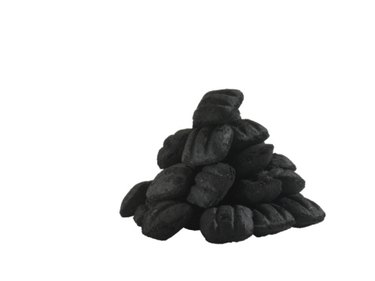Things You'll Need
Spray bottle
Sealed metal containers

A coal stove or furnace remains a common piece of equipment in homes that require heat throughout the winter months. This is due to the fact that coal often burns more evenly and efficiently than wood and is cheaper than oil. Whereas wood-fired stoves require constant watching and tending, coal burns steadily for hours on end with little maintenance. There is one drawback, however, to burning coal -- it can be dirty. Coal dust can quickly spread throughout the house or basement, coating everything in a layer of black grime. Fortunately, you can take steps to prevent coal dust.
Step 1
Construct a storage bin specifically for the coal. The bin should be located in the basement, near a window, thus allowing coal deliveries to be made more easily. The bin should be sealed as tightly as possible so as to prevent dust from spreading outward while the coal is being unloaded. Removable slats in the bin will then allow access to the coal.
Video of the Day
Step 2
Check the doors and stovepipe on your coal-burning stove. The doors should fit tightly against the stove, while each section of stovepipe must snugly connect to one another. Any gaps in the doors or stovepipe may allow smoke, which contains dust, to escape into the house or basement. Install gaskets on the doors to ensure a tighter fit and reinstall better fitting stovepipe, if necessary. A stove that is completely airtight will emit less dust.
Step 3
Open the damper on the stove prior to adding any coal and wait a few minutes. This will allow excess gas and smoke to dissipate. If you fail to open the damper, extra smoke and dust will escape through the door and spread dust throughout the basement or house.
Step 4
Moisten the coal with a water-filled spray bottle slightly before handling it. Damp coal will not cause the same amount of dust as dry coal. Even after moistening the coal, however, you should handle it with care. You can prevent dust by gently shoveling the coal into the stove rather than tossing it in haphazardly.
Step 5
Check to ensure the ash pit door is closed tightly before shaking the ashes. When shaking the ashes, do so slowly and gently in order to prevent excess dust. Handle the ashes with care and carefully place them in a sealed metal container. Seal the container immediately after inserting the ashes. Also avoid stirring or poking the burning coal as much as possible. This not only creates clinkers, it helps spread dust.
Step 6
Shop around at various suppliers when purchasing coal. Search for anthracite coal, as it is cleaner than bituminous coal. Also, look for coal that has been pre-washed. Pre-washed coal will contain less dust than coal that has not been washed. In some areas you can also buy bagged coal. Bagged coal can be unloaded onto a wooden pallet in your basement, which is less dusty than clumps of coal simply shoveled into a bin.
Video of the Day